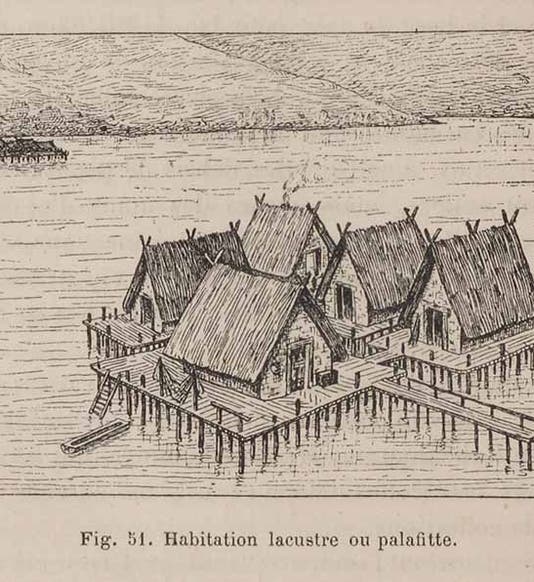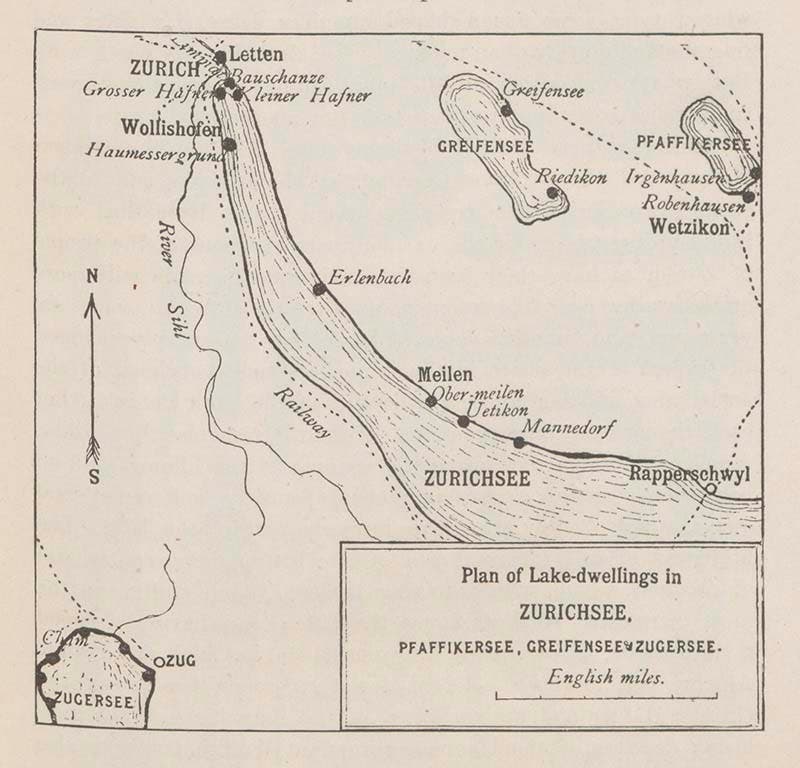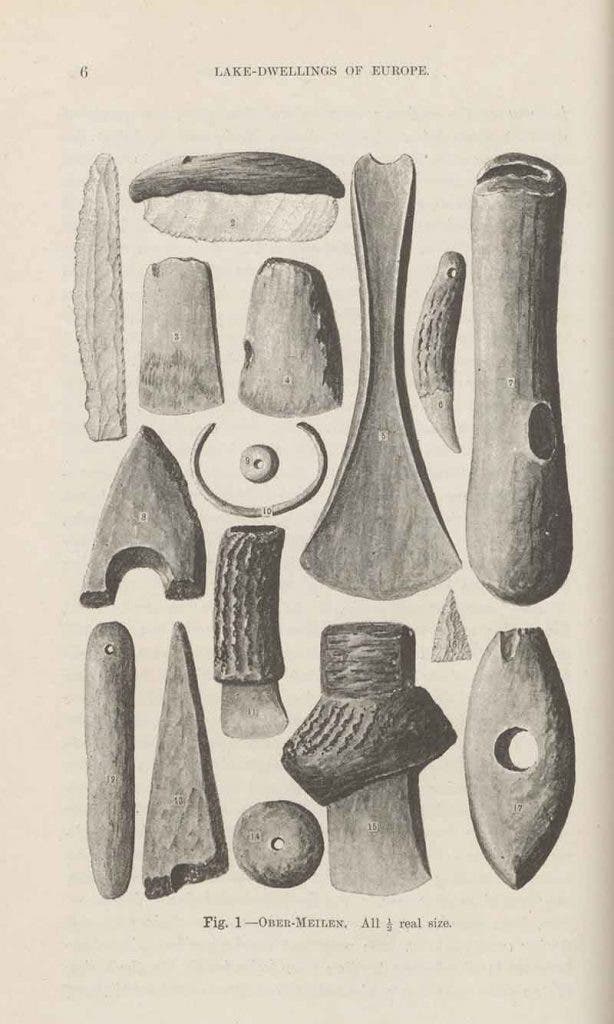Scientist of the Day - Ferdinand Keller
Ferdinand Keller, a Swiss archaeologist, was born Dec. 24, 1800. In 1853, when the water level in Lake Zurich was at a very low level, the heads of wooden piles were discovered poking out of the mud, a short distance from the shoreline, at a place called Ober-Meilen (second image). Further investigation by locals yielded hammerstones, flint scrapers, and fragments of pottery. Similar finds, we now know, had been made elsewhere along the shores of Lake Zurich, and in other Swiss lakes, but no attention had been paid to the piles or their implications.
Fortunately, the schoolmaster at Ober-Meilen thought the piles were significant enough to be brought to the attention of the Antiquarian Society of Zurich, which had been founded in 1832 by Keller. Keller was quite intrigued and hastened to the site to investigate, measure, and collect further relics (third image). Within just a few months, he proposed an idea that had occurred to no other prehistorian of whom we know. Keller was of the opinion that the piles had supported wooden platforms, on which dwelling huts had been built (first image). In short, Ober-Meilen had once been the site of a village of lake-dwellings. Keller argued that these lake-dwellings dated back to the Stone Age and continued through the Bronze and Iron Ages. The Three-Age system had only recently been proposed by two Danish archaeologists, Christian Thomsen and Jens Jakob Worsaae, and Keller was enthusiastic about it.
Keller published a series of papers on Swiss lake-dwellings, which were gathered together and translated into English in 1860 as a book, The lake dwellings of Switzerland and other parts of Europe. We do not have the journals containing his papers or his book in our collections. But other followed Keller's lead and looked for evidence of lake dwellings in other Swiss lakes, and in lakes in other countries across Europe, and soon it was realized that lake-dwellings were a prehistoric feature of nearly every European country, even extending into the British Isles, which no one before Keller had noticed. In 1888, a Scottish archaeologist, Robert Munro, was invited to deliver the Rhind Lectures in Archaeology; his six lectures were published in 1890 as The Lake-Dwellings of Europe, a book that we do have in the Library. It is 600 pages long and describes hundreds of lake-dwelling sites identified by dozens of investigators, all following Keller’s lead. The first 9 pages of Munro’s book are devoted to Keller and Lake Zurich. Munro called the Zurich lake-dwellings "one of the most remarkable archaeological discoveries of this century. Munro’s book is the source for two of our images.
One might have expected that Keller would have graced a Swiss postage stamp somewhere along the way, but I could not find one. So we have to settle for a photograph that claims to depict Keller, but which has no source or date (fourth image) Dr. William B. Ashworth, Jr., Consultant for the History of Science, Linda Hall Library and Associate Professor emeritus, Department of History, University of Missouri-Kansas City. Comments or corrections are welcome; please direct to ashworthw@umkc.edu.









